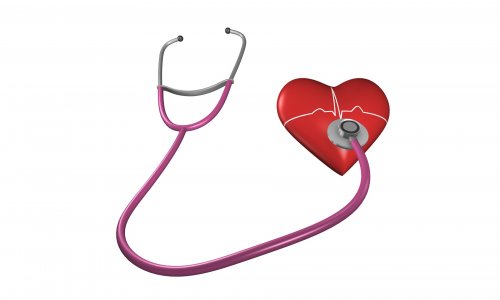'Polypill' cuts cardiac attacks by 80%
The impact of this invention on disease prevention will be enormous - but, manufacturers may not rise to low profits
A newly invented 'Polypill', composed of currently available drugs, may act as a 'vaccine' against heart disease, according to new research published in the British Medical Journal (28 June. BMJ 2003;326:1419).

Professors Nick J Wald and Malcolm R Law, the Polypill’s inventors, maintain: ‘The Polypill strategy could largely prevent heart attacks and stroke if taken by everyone aged 55 and older and everyone with existing cardiovascular disease. It would be acceptably safe and with widespread use would have a greater impact on the prevention of disease in the Western world than any other single intervention.’
In his related editorial, Richard Smith, Editor of the BMJ, also expressed excitement, stating that this issue may well become a collector’s item. ‘It’s perhaps more than 50 years since we published something as important as the cluster of papers from Nick Wald, Malcolm Law, and others.’
At the Department of Environmental and Preventive Medicine, Wolfson Institute of Preventive Medicine, Barts and the London, Queen Mary’s School of Medicine and Dentistry, University of London, London EC1M 6BQ, the professors worked to determine drug and vitamin combinations and doses that could, in a single pill, achieve a large effect in preventing cardiovascular disease with minimal adverse effects. The strategy was to simultaneously reduce four cardiovascular risk factors (low density lipoprotein cholesterol, blood pressure, serum homocysteine, and platelet function) regardless of pre-treatment levels, they write.
Efficacy and adverse effects of the proposed combination was qualified from published meta-analyses of randomised trials and cohort studies and meta-analysis of 15 trials of low does aspiring (50-125 mg/day)
‘They synthesise an enormous amount of information (including over 750 trials with 400,000 participants) to estimate that the pill would reduce heart disease and risk of stroke by over 80%, while causing symptoms warranting withdrawal of the pill in one to two per 100 and fatal side effects in less than one in 10 000 users. If this were correct the benefits would substantially outweigh hazards in people with vascular disease (who have more than a one in five chance of a major event over five years without treatment) and many others at higher risk, says Anthony Rodgers, co-director of the Clinical Trials Research Unit, University of Auckland, New Zealand, writing in the same issue of the BMJ.
‘The formulation which met our objectives was: a statin (for example, atorvastatin (daily dose 10 mg) or simvastatin (40 mg)); three blood pressure lowering drugs (for example, a thiazide, a blocker, and an angiotensin converting enzyme inhibitor), each at half standard dose; folic acid (0.8 mg); and aspirin (75 mg),’ the professors report. ‘We estimate that the combination (which we call the Polypill) reduces IHD events by 88% (95% confidence interval 84% to 91%) and stroke by 80% (71% to 87%). One third of people taking this pill from age 55 would benefit, gaining on average about 11 years of life free from an IHD event or stroke. Summing the adverse effects of the components observed in randomised trials shows that the Polypill would cause symptoms in 8-15% of people (depending on the precise formulation).’
In developed countries, Anthony Rodgers suggests that use of the Polypill could achieve ‘... large reductions in risk factors’ and that ‘...one could reasonably expect more than a halving in cardiovascular risk in the first two years and a two thirds reduction in subsequent years.’ He also points out that the pill would have enormous potential in developing countries, which are now facing an epidemic of cardiovascular disease.
‘More information on side effects, from trials of low dose combinations is clearly needed, especially before contemplating widespread use among people at moderate risk. However, common or serious unanticipated problems seem unlikely since these medications have been studied so extensively and used together so often.’ He suggests that prerequisites prior to marketing should include: ‘Widespread debate, technical solutions in developing and manufacturing the pill(s), to maintain chemical activity. Explicit regulatory requirements, ideally based on balance of benefit and harm rather than principles that fixed dose polypharmacy is intrinsically undesirable. Trials assessing bioavailability, intermediate endpoint effects, safety, tolerability, and adherence (clinical endpoint trials should not be needed for existing indications). Ensuring those in need get access-clear indications and contraindications, affordable formulations and systems to ensure profits are made on large volumes rather than large margins.’
The advent of preventive medications has long been a concern, and clearly needs debate that involves society - adding fluoride to water is one example of preventive care that caused an inevitable outcry when done without prior public debate and consent.
Additionally, ‘Widespread uptake would require overcoming perceptions that cardiovascular disease is a ‘natural’ cause of death, or one that does not lead to substantial disability,’ Anthony Rodgers continues, in his editorial. ‘One must also bear in mind that a third or more of adults in many countries already take natural supplement pills regularly (mostly multivitamins with uncertain benefits, or antioxidants, now known to have no important benefits for major diseases). The strategy should be integrated with population wide approaches that address the root causes of cardiovascular disease, including reshaping societies so that smoking and development of life threatening levels of body fat, cholesterol, and blood pressure are not the norm.’
Ultimately, he concludes that the professors’ claim for their Polypill are possibly justified: ‘Only large reductions in smoking or a few other leading health risks could achieve so much health gain. Realising this enormous potential should be a major goal especially for developing countries.’
Richard Smith says in his editorial that it was ‘...genius to think of the idea and hard work to identify the exact ingredients. The authors have also taken an original step by showing that most of the benefits (and many fewer of the side effects) can be had from taking antihypertensives at lower dose and in combination. ‘
He also points out that the ‘... economics and politics of the project are fascinating. The six ingredients are all off (or about to be off) patent, so the pill might be made very cheaply... but large pharmaceutical companies are not keen. Not only will the profit margin be low but also many of their expensive drugs may be made redundant.’
Finally, Dr Smith poses some entertaining suppositions, including the effects of the Polypill ‘vaccine’ on the roles of cardiologists and cardiac surgeons. ‘ Will they have to retrain as psychiatrists, hoping that nobody invents a ‘happy pill’ to oblige further retraining?’ he asks.
Surely cardiologists should not ignore the Wald and Law paper plus the editorials and related items in this issue of the journal? Access: www.bmj.com
01.07.2003











